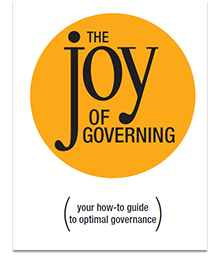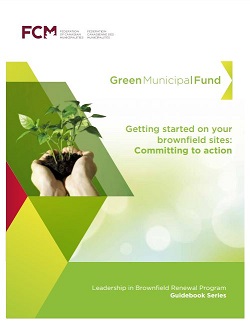 A new guide demystifies asset management by using easy-to-understand language, colourful graphics and practical examples. The Joy of Governing is a 32-page booklet published in May 2018 by the Association of Yukon Communities (AYC).
A new guide demystifies asset management by using easy-to-understand language, colourful graphics and practical examples. The Joy of Governing is a 32-page booklet published in May 2018 by the Association of Yukon Communities (AYC).
“Many people find asset management a little intimidating until they get to know it better,” says Bev Buckway, former Executive Director of the Association of Yukon Communities. A former councillor and mayor of Whitehorse, Ms. Buckway recognizes the value of asset management. She led the effort to create The Joy of Governing to encourage staff and elected officials of local governments to apply the principles of asset management.
“The booklet is written in an open, engaging style and avoids bureaucratic language,” says Ms. Buckway. “It draws readers in by telling a story about local governance: why it exists, what elected officials and staff are responsible for, and how they can best meet the needs of community residents.”
Governance can be particularly difficult in small communities, in part because they don’t have the revenues needed to pay for full-time councillors.
“The booklet has been particularly handy for educating councillors about the link between asset management and sound governance,” says Shelley Hassard, Chief Administrative Officer (CAO) for the Village of Teslin, Yukon.
Like many small communities, Teslin—population approximately 450—delivers a range of key services, such as water and wastewater treatment, road maintenance, waste management, recreation and animal control. Each of these services relies on infrastructure at various stages of its life cycle.
“Council decides where to spend the town’s revenues,” says Ms. Hassard, who completed asset management training several years ago. “With asset management, budget decisions are based on information about the condition of community infrastructure and the importance of the services that the infrastructure provides. The booklet helps councillors and staff reach decisions that best serve the interests of citizens.”
AYC delivered copies of the booklet to the CAO at each of Yukon’s eight municipalities and a total of 42 elected officials. The Federation of Canadian Municipalities’ Municipal Asset Management Program (MAMP), along with the Government of Yukon, paid for the booklet’s development and publication. The Nunavut Association of Municipalities received MAMP funding to translate The Joy of Governing into Inuktitut and distribute it to communities across the territory. A French version is available as well. The booklet has also already been shared and adapted in communities across Canada.
“The Joy of Governing was designed to meet the unique needs of northern communities,” says Bev Buckway. “It helps communities develop the in-house knowledge they need to provide services to residents in a sustainable manner.”
Contact
Shelley Hassard
Executive Director
Association of Yukon Communities
Email: ayced@ayc-yukon.ca
Phone Number: 867-668-4388
Participant organization information
- Association of Yukon Communities: Bev Buckway, former Executive Director
- Population: 35,874
- Project duration: 6 months
- Grant amount: 45,432.00
- Village of Teslin, YT: Shelley Hassard, former CAO
Resource
- The Joy of Governing (your how-to guide for optimal governance) (English, French, Inuktitut): A customized Yukon municipal handbook to introduce elected officials and senior managers to asset management as a primary responsibility of local government.
